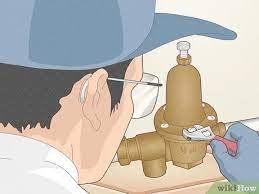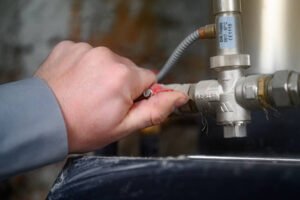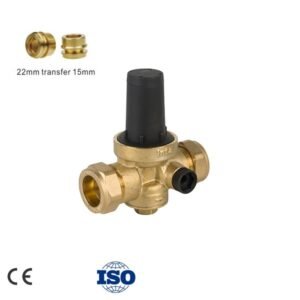Introduction:
Water pressure regulators are unsung heroes of residential plumbing systems, quietly working to maintain the optimal flow of water while protecting pipes, appliances, and fixtures from damage. Despite their importance, many homeowners overlook these devices until they encounter issues like burst pipes or inconsistent water pressure. In this article, we’ll explore the significance of water pressure regulators in residential settings, their functionality, and why it’s essential to ensure they’re installed and maintained properly.
The Role of Water Pressure Regulators:
Water pressure regulators, also known as pressure-reducing valves (PRVs), serve a critical function in controlling the pressure of water entering a property from the main supply line. Without regulation, water pressure can fluctuate wildly, leading to a range of problems such as leaks, burst pipes, and premature wear on appliances. By maintaining a steady pressure within the recommended range of 50-60 pounds per square inch (psi), regulators help ensure the efficient and safe operation of plumbing systems.
Preventing Damage and Extending Lifespan:
One of the primary reasons for installing a water pressure regulator is to prevent damage to plumbing components and household appliances. Excessive water pressure can put undue stress on pipes, causing them to weaken and eventually fail. Similarly, appliances like water heaters, dishwashers, and washing machines are designed to operate within specific pressure limits. High water pressure can shorten their lifespan and lead to costly repairs or replacements.
Conserving Water and Energy:
In addition to protecting your plumbing system, water pressure regulators can also help conserve water and energy. By reducing water pressure to a more efficient level, regulators minimize water waste through leaks and excessive flow. This not only saves money on water bills but also reduces energy consumption associated with heating and pumping water. In regions where water scarcity is a concern, the conservation benefits of pressure regulation are especially significant.
Signs You Need a Water Pressure Regulator:
- Water Hammering: If you hear banging or knocking noises in your pipes when you turn off a faucet or appliance, it could indicate high water pressure and the need for a regulator.
- Leaking Faucets and Pipes: Constant leaks or dripping faucets throughout your home may be a result of excessive water pressure causing wear and tear on seals and joints.
- Appliance Malfunctions: If your water heater, dishwasher, or washing machine frequently experience issues like valve failure or leaks, high water pressure could be to blame.
- Inconsistent Water Pressure: Fluctuating water pressure, where the flow varies dramatically when using different fixtures simultaneously, is a common symptom of unregulated pressure.
Professional Installation and Maintenance:
While some homeowners may be tempted to install a water pressure regulator themselves, it’s often best left to professionals. Plumbing systems can be complex, and improper installation can lead to leaks, water damage, or even water contamination. Professional plumbers have the expertise and specialized tools to ensure that regulators are installed correctly and calibrated to the appropriate pressure level. Additionally, regular maintenance checks by a professional can help identify and address any issues before they escalate into costly problems.
Conclusion:
Water pressure regulators are essential components of residential plumbing systems, providing vital protection against damage and ensuring efficient water usage. By maintaining a steady pressure within the recommended range, regulators help extend the lifespan of pipes, appliances, and fixtures while conserving water and energy. If you suspect that your home’s water pressure is too high or inconsistent, it’s important to have a professional plumber assess the situation and recommend the appropriate course of action. Investing in a quality water pressure regulator and ensuring it is installed and maintained correctly can save you time, money, and headaches in the long run.






